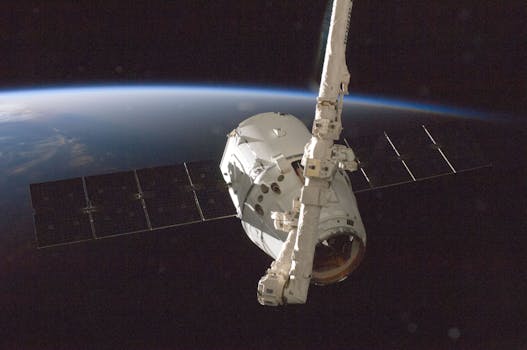From Geostationary to Low Earth Orbit: The Evolution of Satellite Telecommunications in 2023 – Evolution of Satellite Telecommunications

Evolution of Satellite Telecommunications
The focus keyword Evolution of Satellite Telecommunications has been a crucial aspect of modern communication, enabling global connectivity and transforming the way we access information. Over the years, satellite technology has undergone significant changes, evolving from geostationary to low Earth orbit, and offering faster, more reliable, and more accessible connectivity options.
In the early days of satellite telecommunications, geostationary satellites were the primary means of transmitting data and voice communications. These satellites, orbiting the Earth at an altitude of approximately 36,000 kilometers, provided a wide coverage area and were ideal for broadcasting and telecommunications services. However, they had limitations, such as high latency and limited bandwidth, which restricted their use for real-time applications.
With the advent of low Earth orbit (LEO) satellites, the landscape of satellite telecommunications began to change. LEO satellites, orbiting the Earth at an altitude of around 160 to 2,000 kilometers, offered several advantages over geostationary satellites, including lower latency, higher bandwidth, and improved connectivity. This made them ideal for a wide range of applications, including satellite internet, voice communications, and data transmission.
Advantages of Low Earth Orbit Satellites
LEO satellites have several advantages over geostationary satellites, making them an attractive option for satellite telecommunications. One of the primary benefits of LEO satellites is their lower latency, which enables faster data transmission and real-time communications. This is particularly important for applications such as video conferencing, online gaming, and remote healthcare, where delay can be a significant issue.
Another advantage of LEO satellites is their higher bandwidth, which allows for faster data transmission and larger amounts of data to be transmitted. This makes them ideal for applications such as satellite internet, where high-speed connectivity is essential. Additionally, LEO satellites have a lower power requirement, which reduces the cost of launching and operating them.
Challenges and Limitations of Low Earth Orbit Satellites
While LEO satellites offer several advantages, they also have some challenges and limitations. One of the primary challenges is the need for a larger constellation of satellites to provide global coverage, which can be costly and complex to deploy and manage. Additionally, LEO satellites have a shorter lifespan, typically ranging from 5 to 10 years, which requires frequent replacement and can increase the overall cost of the system.
Another limitation of LEO satellites is their limited visibility, which can restricted by the Earth’s horizon. This means that a LEO satellite may not be visible to a user for a significant portion of its orbit, requiring the use of multiple satellites and complex handover protocols to maintain connectivity.
Future of Satellite Telecommunications
The future of satellite telecommunications is exciting and rapidly evolving. With the deployment of new satellite constellations and the development of advanced technologies, such as phased array antennas and laser communications, satellite telecommunications is set to become faster, more reliable, and more accessible. The use of artificial intelligence and machine learning will also play a crucial role in optimizing satellite communications, enabling real-time traffic management and predictive maintenance.
In conclusion, the evolution of satellite telecommunications from geostationary to low Earth orbit has transformed the way we communicate and access information. While LEO satellites offer several advantages, they also have challenges and limitations that must be addressed. As the satellite telecommunications industry continues to evolve, it is likely that we will see significant advancements in technology, enabling faster, more reliable, and more accessible connectivity options for users around the world.




